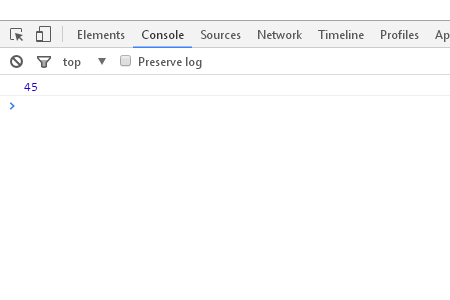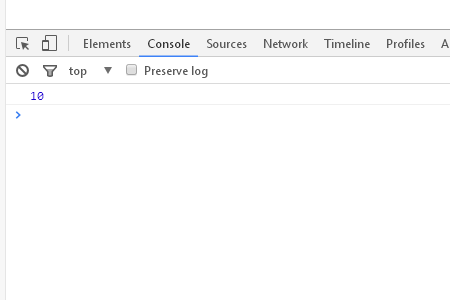How to use reduce() in JavaScript
reduce() is the best way to accumulate each element of array data into a value, so in this article we will introduce in detail how to use reduce() in JavaScript.

Let’s take a look at the specific content.
Suppose we have an array like this:
1 2 3 |
|
In this example, we have prepared an array to store numeric data and an array to store string data.
The most obvious way to use reduce() is to compute the value of all values stored in such an array.
If it is a numeric value, you can calculate the summed value, if it is a character, you can concatenate the individual strings together.
Let's seeHow to use reduce()?
reduce() can execute any function on the target array.
1 |
|
The "cumulative value" of the first parameter represents the value obtained by processing the array elements in sequence.
The second parameter "element" represents the currently processed array element.
Use "return" in this function. By returning any processing, the result is retained in the accumulated value, and finally a value can be obtained.
Let’s look at a specific example
Sum each element of the array
The code is as follows
1 2 3 4 5 |
|
The running results are as follows

In this example, reduce() is performed on an array storing numbers from 1 to 9.
In the function you can see the accumulated values and each element is simply added.
becomes "1 2" in the first processing, stores the sum in the accumulated value, and performs "3 3" in the next processing.
By doing this, the running result output is that the sum of all values is "45".
Finally we need to explain one thing:
It is not allowed to use the "break" interrupt processing method in the reduce() function, so as an alternative, there is an interrupt that uses the index number of the array Let’s take a brief look at the method below.
Actually, the reduce() function can have up to four parameters.
1 |
|
The third parameter "index number" represents the index number of the currently processed array.
The fourth parameter "array" represents the array itself currently being processed.
Using this parameter, the interrupt process can be implemented as follows!
1 2 3 4 5 6 |
|
The running results are as follows

Please pay attention to the IF statement in the reduce() function!
By describing "index> = 3" in the conditional expression, when it becomes the third index number of the array, arbitrary processing can be performed.
The process becomes "arr.splice(1)" and removes all array elements after the third index.
Thus, the processing of reduce() will end, so you can perform the same function as "break".
The above is the detailed content of How to use reduce() in JavaScript. For more information, please follow other related articles on the PHP Chinese website!

Hot AI Tools

Undresser.AI Undress
AI-powered app for creating realistic nude photos

AI Clothes Remover
Online AI tool for removing clothes from photos.

Undress AI Tool
Undress images for free

Clothoff.io
AI clothes remover

AI Hentai Generator
Generate AI Hentai for free.

Hot Article

Hot Tools

Notepad++7.3.1
Easy-to-use and free code editor

SublimeText3 Chinese version
Chinese version, very easy to use

Zend Studio 13.0.1
Powerful PHP integrated development environment

Dreamweaver CS6
Visual web development tools

SublimeText3 Mac version
God-level code editing software (SublimeText3)

Hot Topics
 1377
1377
 52
52
 How do I create and publish my own JavaScript libraries?
Mar 18, 2025 pm 03:12 PM
How do I create and publish my own JavaScript libraries?
Mar 18, 2025 pm 03:12 PM
Article discusses creating, publishing, and maintaining JavaScript libraries, focusing on planning, development, testing, documentation, and promotion strategies.
 How do I optimize JavaScript code for performance in the browser?
Mar 18, 2025 pm 03:14 PM
How do I optimize JavaScript code for performance in the browser?
Mar 18, 2025 pm 03:14 PM
The article discusses strategies for optimizing JavaScript performance in browsers, focusing on reducing execution time and minimizing impact on page load speed.
 What should I do if I encounter garbled code printing for front-end thermal paper receipts?
Apr 04, 2025 pm 02:42 PM
What should I do if I encounter garbled code printing for front-end thermal paper receipts?
Apr 04, 2025 pm 02:42 PM
Frequently Asked Questions and Solutions for Front-end Thermal Paper Ticket Printing In Front-end Development, Ticket Printing is a common requirement. However, many developers are implementing...
 How do I debug JavaScript code effectively using browser developer tools?
Mar 18, 2025 pm 03:16 PM
How do I debug JavaScript code effectively using browser developer tools?
Mar 18, 2025 pm 03:16 PM
The article discusses effective JavaScript debugging using browser developer tools, focusing on setting breakpoints, using the console, and analyzing performance.
 How do I use source maps to debug minified JavaScript code?
Mar 18, 2025 pm 03:17 PM
How do I use source maps to debug minified JavaScript code?
Mar 18, 2025 pm 03:17 PM
The article explains how to use source maps to debug minified JavaScript by mapping it back to the original code. It discusses enabling source maps, setting breakpoints, and using tools like Chrome DevTools and Webpack.
 Who gets paid more Python or JavaScript?
Apr 04, 2025 am 12:09 AM
Who gets paid more Python or JavaScript?
Apr 04, 2025 am 12:09 AM
There is no absolute salary for Python and JavaScript developers, depending on skills and industry needs. 1. Python may be paid more in data science and machine learning. 2. JavaScript has great demand in front-end and full-stack development, and its salary is also considerable. 3. Influencing factors include experience, geographical location, company size and specific skills.
 Getting Started With Chart.js: Pie, Doughnut, and Bubble Charts
Mar 15, 2025 am 09:19 AM
Getting Started With Chart.js: Pie, Doughnut, and Bubble Charts
Mar 15, 2025 am 09:19 AM
This tutorial will explain how to create pie, ring, and bubble charts using Chart.js. Previously, we have learned four chart types of Chart.js: line chart and bar chart (tutorial 2), as well as radar chart and polar region chart (tutorial 3). Create pie and ring charts Pie charts and ring charts are ideal for showing the proportions of a whole that is divided into different parts. For example, a pie chart can be used to show the percentage of male lions, female lions and young lions in a safari, or the percentage of votes that different candidates receive in the election. Pie charts are only suitable for comparing single parameters or datasets. It should be noted that the pie chart cannot draw entities with zero value because the angle of the fan in the pie chart depends on the numerical size of the data point. This means any entity with zero proportion
 TypeScript for Beginners, Part 2: Basic Data Types
Mar 19, 2025 am 09:10 AM
TypeScript for Beginners, Part 2: Basic Data Types
Mar 19, 2025 am 09:10 AM
Once you have mastered the entry-level TypeScript tutorial, you should be able to write your own code in an IDE that supports TypeScript and compile it into JavaScript. This tutorial will dive into various data types in TypeScript. JavaScript has seven data types: Null, Undefined, Boolean, Number, String, Symbol (introduced by ES6) and Object. TypeScript defines more types on this basis, and this tutorial will cover all of them in detail. Null data type Like JavaScript, null in TypeScript




